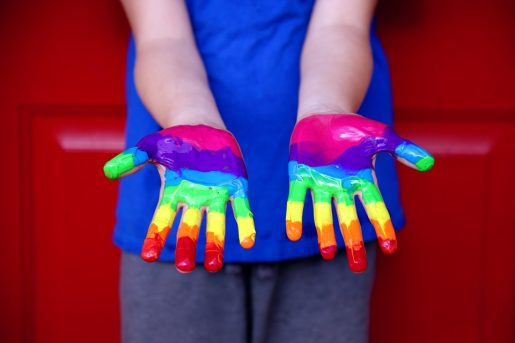LGBTQ patients and pediatric healthcare policies
When compared to their heterosexual and cisgender counterparts, the health and mental health disparities of lesbian, gay, bisexual, transgender, and questioning* (LGBTQ) youth are striking.
LGBTQ youth are more likely to have eating disorders and body dissatisfaction, smoke cigarettes, and use alcohol, marijuana, and nicotine. They are at greater risk for bullying, harassment, and physical or sexual assault. LGBTQ youth are more likely to have higher incidence of low self-esteem, anxiety and depression, sleep difficulties, and suicidal ideation.

These health and mental health disparities are particularly significant when placed against a backdrop of access barriers. LGBTQ youth are more likely to be discriminated against by healthcare providers and have limited options for culturally competent, affirming care. Access barriers may influence low rates of sexual and/or gender identity disclosure of youth to healthcare providers.
Data report that youth not only fear providers’ implicit and explicit negative attitudes and bias, but are also apprehensive due to active family involvement. Research suggests that non-disclosure may, in part, be the result of parents’ accompaniment in the examination room, youths’ lack of comfort discussing sexuality in front of a parent, and fear of a provider’s non-consensual disclosure.
These reactions from parents include verbal and physical abuse, rejection, excommunication, forced conversion therapy or homelessness. These negative experiences affect youths’ health and mental health outcomes. Non-disclosure may act as a protective mechanism and an expression of resilience.
Although family-centered care is an important aspect of pediatrics, issues pertaining to confidentiality and privacy are met with fears of disclosure and safety for LGBTQ youth.
Balancing how and when to include parents in LGBTQ pediatric care is complicated. Having a standard of care in which providers utilize gender-neutral language for all patients and ask open-ended questions in all intake forms fosters inclusivity. Knowing how family involvement may hinder or support their patients’ health and mental health is imperative to good ethical care.
In medical school, about five hours are devoted to LGBTQ issues. Yet, research shows that students with greater exposure to LGBTQ patients are more likely to perform more comprehensive patient histories and possess greater knowledge of LGBTQ health concerns. Providers’ demonstration of relevant and culturally competent and affirming resources, through visual cues and dialogue, can provide a safe space for LGBTQ youth.
Additionally, institutional hospital policies and professional bodies must support providers, with the inclusion of written and posted diversity, anti-discrimination, and non-harassment statements and guidelines to monitor and inform confidential practice for LGBTQ youth.
As providers identify their own implicit bias, misperceptions, and negative attitudes, they can actively work to combat barriers to care and promote inclusive sexual health education and positive youth development. The key is for clinicians to establish trust and rapport. This can be done through multiple mechanisms including asking questions and encouraging dialogue, building a respectful, safe, and inclusive environment, and demonstrating knowledge, competence, and skill surrounding LGBTQ health and mental health, especially with kids.
-By Sophia Fantus, Ph.D., M.S.W., a graduate of the clinical ethics fellowship in the Center for Medical Ethics and Health Policy at Baylor College of Medicine
* LGBTQ is not meant to be used as an exclusive term but to represent the broad spectrum and range of sexual and gender fluidity. LGBTQ is used here for brevity purposes but meant to be inclusive and all-encompassing while remaining attuned to the limitations of this term.



